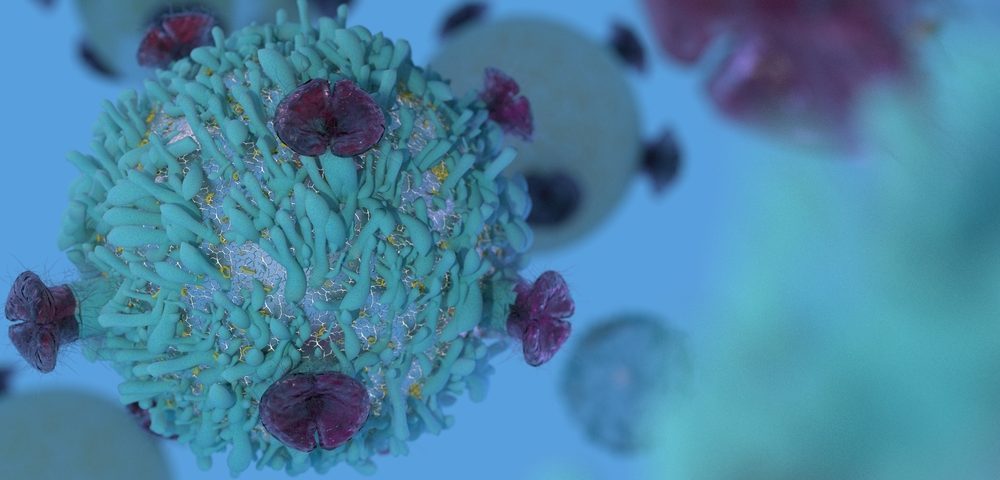Patients with either active or clinically inactive systemic juvenile idiopathic arthritis are characterized by persistent innate immune activation, new research reports.
The study, “Neutrophils From Children With Systemic Juvenile Idiopathic Arthritis Exhibit Persistent Proinflammatory Activation Despite Long-Standing Clinically Inactive Disease,” was published in Frontiers in Immunology.
The pathogenesis — the way disease develops — of systemic juvenile idiopathic arthritis is unclear. However, it shares many features with auto-inflammatory disorders, defined by excessive and uncontrolled activation of innate immunity, such as increased circulating innate immune cells, upregulation of innate immune system-related genes, and high levels of innate immune system-based pro-inflammatory cytokines. The innate immune system is the body’s first line of immune defense that attempts to stop infection in the early hours after exposure to a pathogen.
Neutrophils are the most numerous innate immune cells circulating throughout the body and are critical to immune responses of both host defense and auto-inflammation. Neutrophils also play key roles in the pathogenesis of auto-inflammatory disorders, such as systemic juvenile idiopathic arthritis.
Circulating neutrophils are increased in active systemic juvenile idiopathic arthritis. These increased neutrophil numbers are associated with a gene expression signature — a group of genes associated with a specific biological process — in whole blood and elevation in levels of S100 proteins, which are related to neutrophil-mediated inflammation in active systemic juvenile idiopathic arthritis.
A recent study examining predominantly new-onset patients considerably advanced the characterization of neutrophils, S100 levels, and gene expression signatures in systemic juvenile idiopathic arthritis.
However, little is known about whether neutrophil abnormalities persist in chronic or clinically inactive systemic juvenile idiopathic arthritis, and therefore the characterization of juvenile arthritis types remains incomplete.
In this study, researchers from Cincinnati Children’s Hospital Medical Center examined neutrophils, S100 levels, and gene expression signatures in a large cohort of children with a spectrum of systemic juvenile idiopathic arthritis disease activity. The study included children with new-onset disease, active disease (both systemic or arthritic features), and clinically inactive systemic juvenile idiopathic arthritis.
The researchers first characterized differences in the proportion of neutrophil subtypes from patients with both active and inactive disease.
In children with active systemic juvenile idiopathic arthritis and active systemic features, they found that 10% of all neutrophils were characterized by the expression of particular levels of two proteins on their surface: they were positive (high levels) for CD16 and expressed intermediate levels of CD62L (known as CD16+CD62Ldim neutrophils).
This specific type of neutrophil was much lower in non-disease patients (i.e. controls, 1%) and in patients with inactive disease (3.4%) or patients with active arthritis not exhibiting systemic features (0.9%). Importantly, this particular type of functional neutrophil has been identified as emerging in states of systemic inflammation.
Next, the researchers characterized the levels of two S100 protein types, S100A8/A9 and S100A12, in different juvenile idiopathic arthritis patient types. These two proteins are known to be present at very high levels in systemic inflammation. Accordingly, children with active disease had significantly higher serum levels of S100A8/A9 and S100A12 than those with inactive disease.
Although the serum levels of S100 proteins were three to four times higher in active compared to inactive disease, the researchers wanted to know whether neutrophils from patients with systemic juvenile idiopathic arthritis, active or inactive, had different capacities for releasing S100 proteins.
They found that when they purified neutrophils from participants with disease, the neutrophils generated much more S100A8/A9 protein than in controls. However, this difference was not found for the S100A12 protein.
The neutrophils from children with systemic juvenile idiopathic arthritis had different gene expression signatures than those from healthy controls. The researchers identified more than 200 genes that were different between neutrophils from children with active disease and healthy children.
They also found that neutrophils from children with juvenile arthritis had a marked pro-inflammatory gene expression signature, which was present in both active and inactive disease.
“These findings suggest that in systemic juvenile idiopathic arthritis, neutrophils demonstrate a marked pro-inflammatory gene expression signature, and this can persist despite longstanding and clinically effective biologic treatment,” researchers stated.
Curiously, in addition to the presence of a pro-inflammatory gene expression signature in participants with inactive disease, the researchers also found that the pro-inflammatory cytokine IL-18 was still present in serum of more than half of the participants with inactive disease.
IL-8 is a protein produced by certain cells of the immune system that “recruits” neutrophils to inflammation sites.
“Together, these findings first confirm the persistence of pro-inflammatory gene expression signatures in neutrophils from patients with inactive systemic juvenile idiopathic arthritis, and second suggest an association between signature persistence and elevated serum IL-18 levels,” researchers said.
In summary, the study reports evidence for persistent activation of neutrophil-mediated inflammation in juvenile arthritis patients, including those with longstanding inactive disease.

